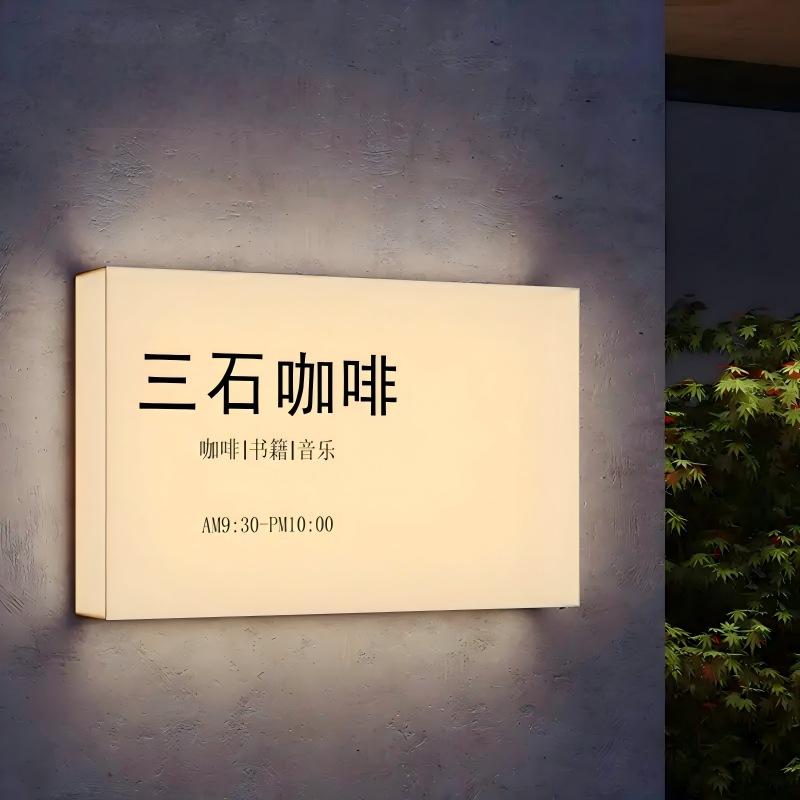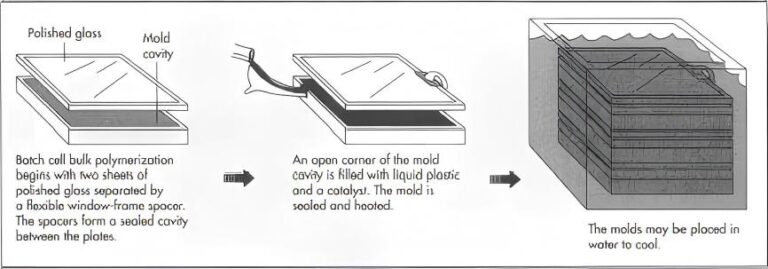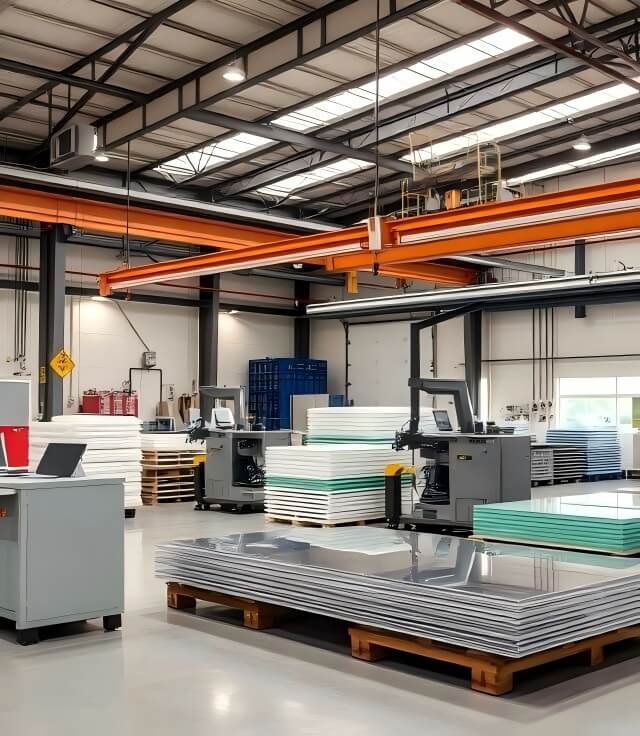-
Xinqi Development Zone, Leliu, Foshan, Guangdong

Acrylic Outdoor Signs: Eco-Friendly, High-Impact Visibility Solution
Abstract:
Outdoor signs are a silent battlefield for commercial competition. This article deeply analyzes the core performance of mainstream materials such as acrylic, stainless steel, aluminum, PVC, and polycarbonate, revealing the comprehensive dominance of acrylic in weather resistance, visual performance, processing freedom, maintenance cost, and environmental sustainability, and provides you with a scientific decision-making basis for creating cost-effective and high-conversion outdoor commercial signs. As the physical carrier of the commercial image, the material selection of outdoor signs is not a simple cost consideration, but a precise balance between brand strategy, environmental adaptability, and visual effects. In the face of harsh outdoor challenges such as ultraviolet rays, wind and rain erosion, and temperature changes, only scientific material selection can ensure that the signboard shines for a long time and continues to attract traffic.
1. Extraordinary weather resistance and long life: the ultimate answer to time cost
Acrylic has minimal performance degradation under long-term outdoor exposure and wind and rain erosion, which is significantly better than most materials. High-quality acrylic sheets contain highly efficient UV absorbers and have strong UV resistance. They can maintain full colors and be as bright as new over the years, and are not prone to yellowing, brittleness or cracking. Its water absorption rate is extremely low (usually <0.3%), which eliminates the structural problems of signs caused by water absorption, expansion and deformation. The Plastics Industry Association (Plastics Industry Association) reported that the outdoor service life of professional-grade acrylic can reach more than 10 years, far exceeding PVC and other materials. PVC is prone to aging, yellowing and brittleness; some coated aluminum sheets or spray-painted surfaces are prone to fading and peeling under ultraviolet rays/bad weather.
2. Unparalleled light transmission and visual feast: Light up the charm of the brand
The optical purity of acrylic gives the signboard an irreplaceable visual impact and high-end texture. Acrylic has a light transmittance of up to 92% (far exceeding the approximately 80-90% of glass), and the light is evenly and softly transmitted inside it, making it the gold standard for making luminous characters (especially 3D luminous characters). With LED light sources, it can present a bright, full, uniform and transparent luminous effect, which is particularly attractive at night or in low light. Its surface has a high gloss and can be polished to a mirror effect, which enhances the overall grade of the sign. Market research organization Grand View Research emphasized in its analysis of outdoor advertising materials that high light transmittance and uniform luminous properties are key factors in improving advertising visibility and recall (Related Trends). Metal materials (stainless steel, aluminum plates) are not light-transmitting and rely on external lighting or additional light boxes; PVC light transmittance and light uniformity are far inferior to acrylic; although polycarbonate has good light transmittance, its surface hardness is low and it is easy to scratch, affecting the light transmittance effect.
3. The magician who shapes freedom: unlimited creativity from plane to three-dimensional
Acrylic’s excellent thermoforming performance releases unlimited possibilities for signboard design. After heating (about 150-160°C), acrylic can be easily processed by precise heat bending, blister molding, compression molding, etc. to produce smooth curved surfaces, rounded corners, and even complex three-dimensional shapes (such as spheres and special-shaped light boxes). This allows designers to break through the limitations of the plane and create highly recognizable and artistic three-dimensional signs, blister words, and logo shapes, greatly improving the brand image memory point. Its excellent engraving and cutting performance also facilitates the production of fine graphics. The three-dimensional modeling of metal materials such as stainless steel and aluminum plates is difficult and costly; although PVC and polycarbonate can be hot-bent, their molding accuracy, surface finish and retention are usually not as good as acrylic.
4. A strong body guards the business image: a reliable security guard
Acrylic has both high strength and toughness, providing reliable physical protection. Acrylic’s impact resistance is more than 10 times that of ordinary glass (tested according to ASTM D256 standard). It is not easy to break as a whole even in the event of hail or accidental impact (usually only cracks or gaps are produced), which greatly reduces the risk of fragments flying and injuring people and the probability of sudden failure of the sign. Its surface hardness (Rockwell hardness M80-100) can also effectively resist daily scratches and wear. Glass is fragile and fragments are dangerous; although polycarbonate is more impact-resistant, its surface hardness is low and it is very easy to scratch and affect the appearance; metal materials are hard but are easily permanently deformed by strong impact.
5. A wise choice for worry-free economy: the full-cycle cost advantage is prominent
Acrylic signs have low comprehensive maintenance costs and significant long-term economic benefits. The surface of acrylic is dense and smooth, and it is not easy to absorb dust and pollutants. Daily cleaning only requires water or mild detergent to wipe to restore the brightness, without special expensive maintenance. Its excellent weather resistance and anti-yellowing properties reduce the cost of frequent renovation or replacement due to aging and fading (such as spray-painted cloth and some soft film materials). Combined with its long life, the full life cycle cost (purchase + installation + maintenance + replacement) has significant advantages. The maintenance report of the International Facility Management Association (IFMA) often lists material durability and low maintenance requirements as the core elements to reduce the total cost of facilities. Metal signs need to be cleaned and maintained regularly to prevent stains and fingerprints, and anti-rust treatment is also required in certain environments (such as coastal areas); spray-painted materials are easy to fade and need to be replaced regularly; materials with poor surface treatment are easy to leave stains and difficult to clean.
6. Green Business Passport: Environmental Protection and Sustainable Responsible Choice
Acrylic meets increasingly stringent environmental protection requirements and supports a sustainable brand image. Acrylic (PMMA) itself is non-toxic and odorless, and does not release harmful substances during production and use (complying with RoHS and other directives). More importantly, it is a thermoplastic and can be 100% recycled and reused. Discarded acrylic signboard materials can be re-granulated after crushing and melting, and used to produce new acrylic products or other plastic products, greatly reducing resource consumption and landfill pressure. Choosing recyclable materials is an important manifestation of the brand’s practice of the ESG (environment, society, governance) concept. Authoritative environmental certifications such as UL Environmental Claim Verification (UL ECVP) can endorse the environmental attributes of the material. PVC materials contain chlorine and possible added plasticizers, and their production and incineration may cause environmental controversy; composite materials are difficult to recycle.
Summary:
In the arena of outdoor signs, acrylic stands out as a “hexagonal warrior”. It is not only a tough shield against wind and rain erosion, but also a magic crystal that creates stunning visuals; it not only gives designers the freedom to be imaginative, but also protects the long-term cost and environmental bottom line for merchants. When stainless steel is cool, aluminum is light, PVC is economical, and polycarbonate is strong, acrylic can become the uncrowned king of outdoor sign materials with its overwhelming advantages in comprehensive performance, especially in weather resistance, extraordinary light transmission, three-dimensional forming ability, impact resistance, low maintenance cost, and green recyclability. Choosing acrylic is not just choosing a material, but also choosing the brand’s lasting brilliance in the long river of time and its responsibility in the wave of environmental protection. Let this “commercial crystal” become your most trustworthy silent spokesperson in the outdoor battlefield.







